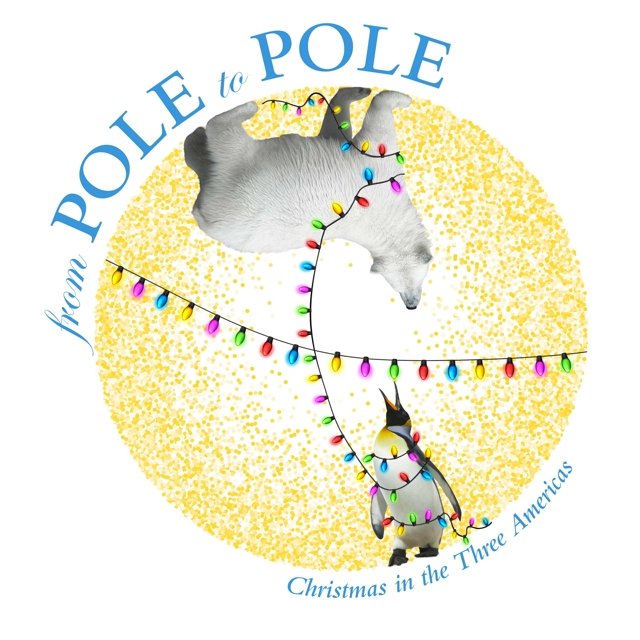Timothy Kramer on Blending Traditions
[et_pb_section fb_built="1" _builder_version="3.22" custom_padding="27px|0px|0|0px|false|false"][et_pb_row column_structure="2_3,1_3" _builder_version="4.0.6" background_color="#E1D8E9" custom_padding="20px|20px|20px|20px|true|true"][et_pb_column type="2_3" _builder_version="4.0.6"][et_pb_text _builder_version="4.0.6" text_font="|700|||||||" text_text_color="#5C3877" custom_margin="||10px||false|false"]
Timothy Kramer on Blending Traditions
Our 2019-2020 Composer-Not-in-Residence discusses the "ecumenical edge" of his new "Cradle Song."
[/et_pb_text][et_pb_text _builder_version="4.0.6" text_font="||||||||" text_line_height="1.4em"]
Where can a Christian lullaby, a Jewish blessing, a mother’s pragmatism and a sense of the mystical all meet? In Timothy Kramer’s new work, “Cradle Song,” which SF Choral Artists will premiere in our December concert, “From Pole to Pole: Christmas in the Three Americas.”
Below, Tim discusses the way styles, cultures, and histories come together in his work.
[/et_pb_text][/et_pb_column][et_pb_column type="1_3" _builder_version="4.0.6"][et_pb_image src="https://www.sfca.org/wp-content/uploads/2019/12/Composer-Timothy-Kramer-3x4-225x300.jpg" _builder_version="4.0.6" width="64%" module_alignment="center"][/et_pb_image][/et_pb_column][/et_pb_row][et_pb_row column_structure="3_5,2_5" _builder_version="3.25" custom_padding="27px|0px|0|0px|false|false"][et_pb_column type="3_5" _builder_version="3.25" custom_padding="|||" custom_padding__hover="|||"][et_pb_text _builder_version="4.0.6" text_font="||||||||" header_font="||||||||" header_2_font="||||||||" header_2_font_size="21px" header_2_line_height="1.2em"]
Your musical background is quite eclectic. Over the years, you’ve performed organ and harpsichord in church settings, played bass guitar for jazz and rock ensembles, and sung in and conducted choirs, among other things. With such a broad palette, how do you choose what influences to bring in when you’re writing a new work?
Well, I’ve never sat down and said said “I’m going to write a jazz piece” or “I’m going to write a rock piece.” It’s not usually that overt, though I do have a work—the last movement of my symphony—which employs funk, jazz, swing and salsa at different points. But mostly, the rhythms and harmonies from those idioms just creep into my music because they’re right for what I’m trying to achieve.
When you write for voices, everything has to follow from the text. It dictates the rhythm and the texture, and singers really do respond to the text. Then, when you write a commission, you have a responsibility to write for the group that will be performing the work, and for the place and the context where the work will be performed. I think about the strengths and limitations of the group, the program in which the piece will be performed, and the way the audience might receive that work based on its setting. And all of that shapes those choices about which idioms to employ. So maybe I’ll choose a certain voicing of a chord from jazz, but not because it’s “a jazz piece,” just because it’s right—for the text, for the ensemble, for the program, et cetera.
On texts: your new work, “Cradle Song,” you pair the traditional Christian “Dormi, Jesu” text with the Jewish blessing for a male child. Can you speak more about that choice?
Often, when you hear the "Dormi Jesu", it’s such a traditional Christian text that some might forget that Jesus was Jewish. This wasn’t a Christian ceremony; it was a Jewish boy being born, and I assume that Joseph or someone might have sung the blessing. I wanted to put those next to each other because it’s not just a religious setting, it’s a historical one.
The harmonic language in “Cradle Song” is intriguing. From the singer’s perspective, it’s very unsettled, with a hint of tension driving each chord towards the next, without ever being outright dissonant. Can you speak more about that choice?
Well, everything follows from the text, and even though the “Dormi Jesu” is a lullaby it’s not without tension. Thinking historically, there may have been real anxiety for Mary holding her newborn. If in fact it is winter and it’s cold and you’re in a barn, those are some humble beginnings and you’re probably wondering what’s going to happen to you and this baby.
John Rutter has a very famous setting of this same text. It’s very lush and sequential, harmonically “correct” though perhaps a little jazzy with the tall chords at the end. I wanted to capture some of that sweetness, but also some of the more distant, mystical qualities of Anton Webern’s duets for voice and clarinet, or even Messiaen. “Cradle Song” is a lullaby, but it’s also a little otherworldly.
What should the audience listen for when they hear this piece?
The overriding sentiment is this rocking back and forth. It’s gentle, but a little mysterious, like a beautiful full moon on a cold winter night. You don’t want to be out there very long, but it’s so beautiful you’re not ready to go in just yet.
For Christians, there’s an edge of uncertainty to Jesus’ birth—this is just a baby boy, but what’s to become of him? What does his birth mean? So there’s beauty, but there’s also some mysticism, and a hint of disquiet. I’d listen for that.
[/et_pb_text][et_pb_divider color="rgba(0,0,0,0.12)" _builder_version="4.0.6" hover_enabled="0" custom_margin="||0px||false|false" custom_padding="||0px||false|false"][/et_pb_divider][et_pb_text _builder_version="4.0.6" hover_enabled="0"]
Timothy Kramer is SFCA’s 2019-2020 Composer-Not-In-Residence. His works have been performed throughout the world by groups such as the Indianapolis, Detroit, Tacoma, and San Antonio Symphony Orchestras, North/South Consonance, the SOLI Ensemble, the ONIX Ensemble, the Detroit Chamber Winds, Luna Nova, and Ensemble Mise-en. He has received grants from the Guggenheim Foundation, the NEA, the MacDowell Colony, Meet the Composer, BMI, ASCAP, and the AGO, and commissions from the Midwest Clinic, the Utah Arts Festival, and the Detroit Chamber Winds, among others. His degrees are from Pacific Lutheran University (B.M.) and the University of Michigan (M.M., D.M.A.), and he was a Fulbright Scholar to Germany.
Originally from Washington State, he taught at Trinity University in San Antonio for 19 years, where he also founded CASA (Composers Alliance of San Antonio). In 2010 he became Chair of the Music Department at Illinois College in Jacksonville, Illinois, and was named the Edward Capps Professor of Humanities in 2013. His works are published by Southern Music, Earnestly Music, Hinshaw, and Selah and are recorded on Calcante, North/South, Capstone, and Parma, who will soon release a CD of all his orchestral music with the Janáček Philharmonic.
[/et_pb_text][/et_pb_column][et_pb_column type="2_5" _builder_version="3.25" custom_padding="|||" custom_padding__hover="|||"][et_pb_text _builder_version="4.0.6" text_font="||||||||" text_font_size="19px" text_orientation="center"]
Come to the Concert!

San Francisco
Sunday, Dec. 15, 4pm
Oakland
Friday, Dec. 20, 8pm
Palo Alto
Saturday, Dec. 21, 8pm
Buy tickets in advance and save!
[/et_pb_text][et_pb_button button_url="/2019-2020-season/#december" button_text="Details and Tickets" button_alignment="center" _builder_version="4.0.6" custom_button="on" button_text_size="18px" button_text_color="#ffffff" button_bg_color="#DD8E46" button_border_width="0px" button_font="|600|||||||" button_on_hover="off"][/et_pb_button][/et_pb_column][/et_pb_row][/et_pb_section]
